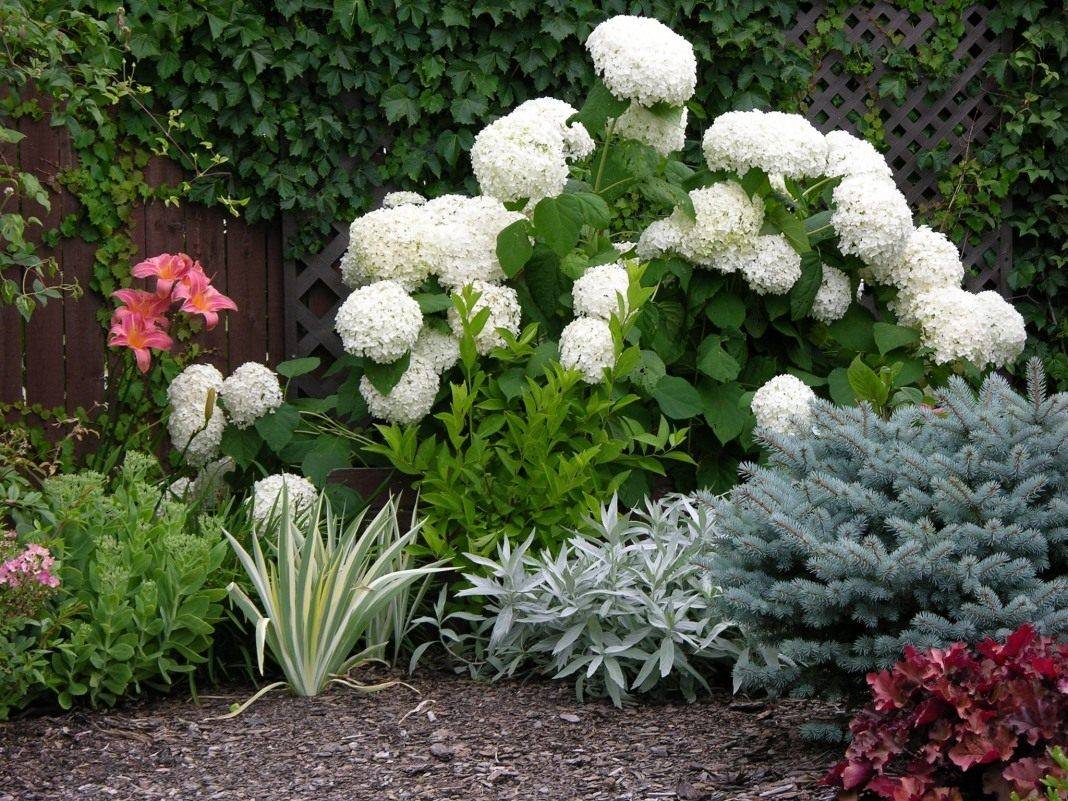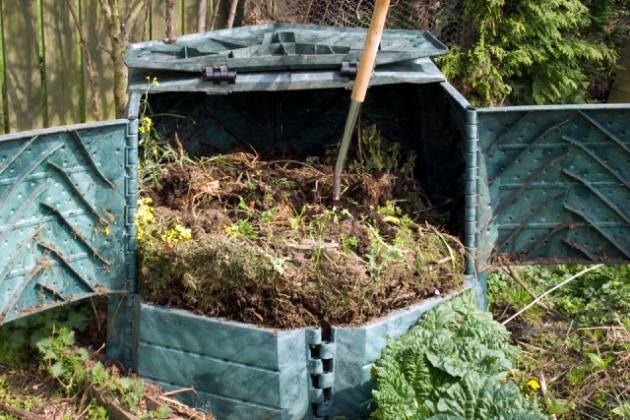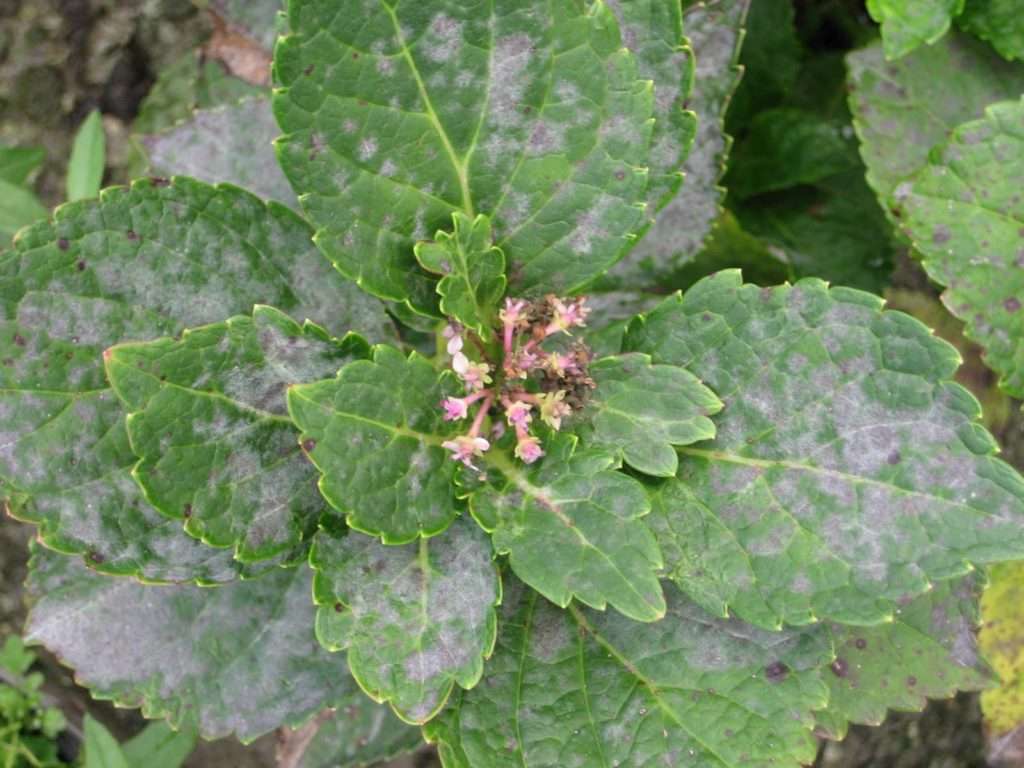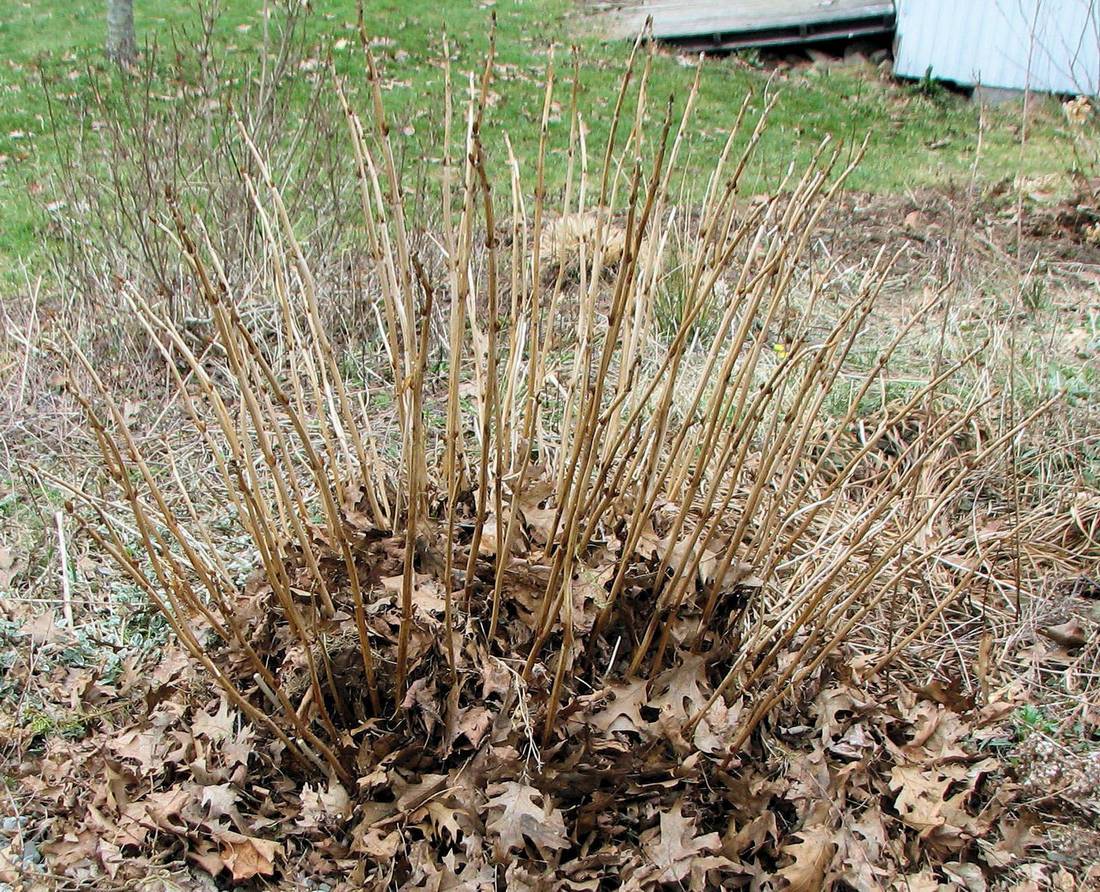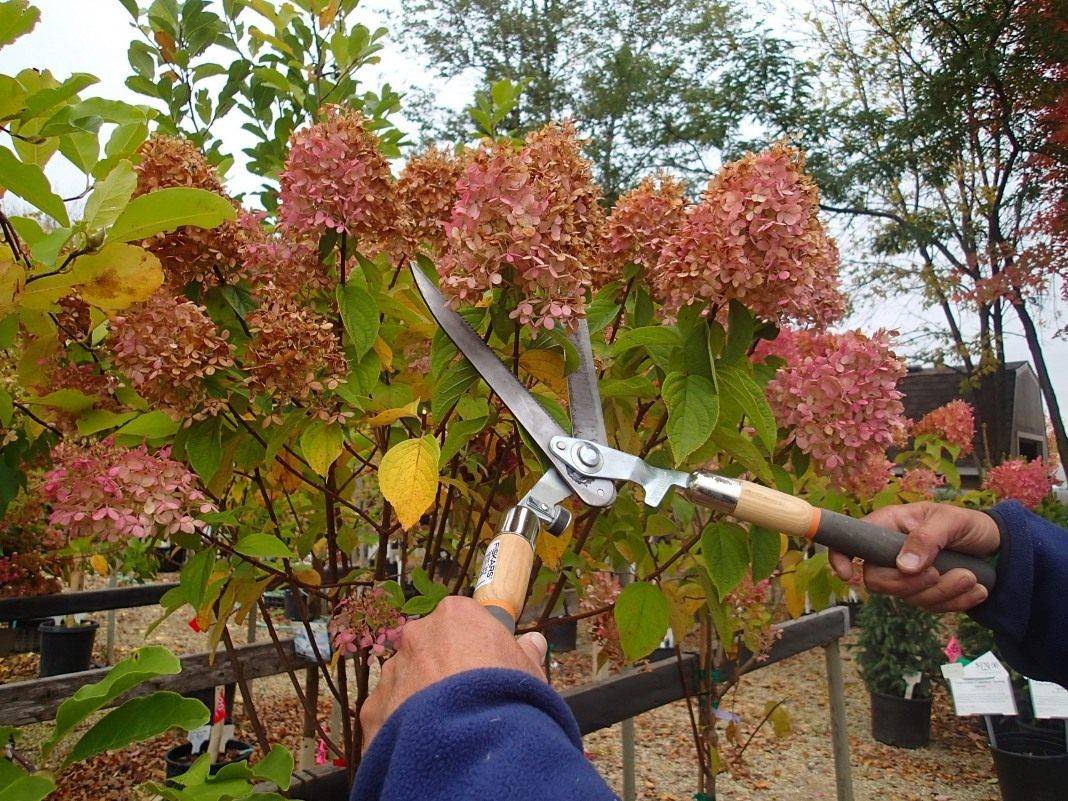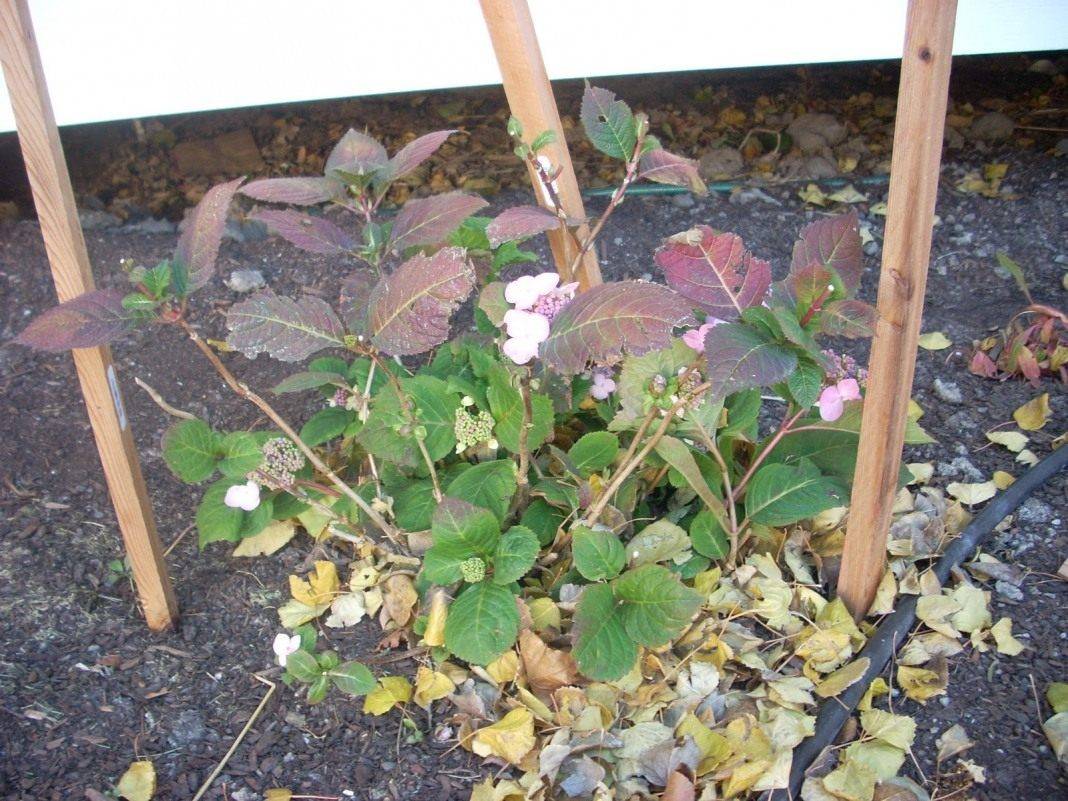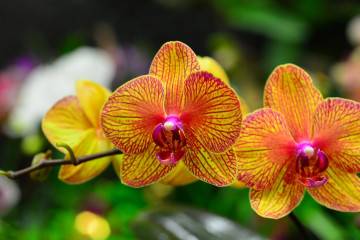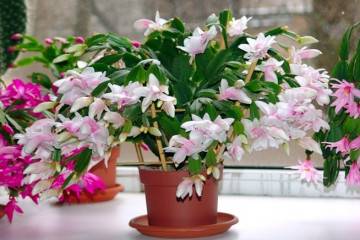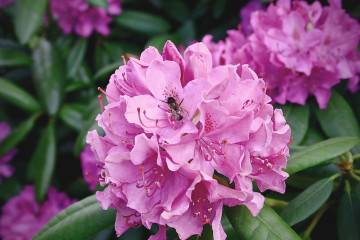Why does hydrangea have pale leaves - how to feed?
Content:
Garden hydrangea, which is planted and cared for in the open field in accordance with certain rules, may lose the natural color of leaves and buds. To avoid such troubles, it is worth feeding the plant in time, moistening the soil. There are several options for changing the color of the leaves of a hydrangea: pallor, redness and blackening. The main thing is to properly care for the flower.
Why does hydrangea have pale leaves?
Usually summer residents have a lot of questions about how to properly care for hydrangea. Especially relevant is the problem of why hydrangeas have pale leaves and how to deal with it.
The aerial part of the plant can change color for several reasons, but the most common is a lack of nutrients in the soil. In order for the hydrangea to regain its attractive appearance in the country, you need to properly fertilize the soil or fertilize before planting.
Hydrangea leaves brighten - how to feed
Many gardeners have a question - if hydrangea has pale green leaves, what to do and how to help the flower? First, you need to determine the composition of the soil, and only then proceed to solve the problem - select fertilizers for this case.
If the leaf plate begins to turn white, and the veins retain their original color, then a disease such as chlorosis is determined. It is advisable to immediately start restoring the normal composition of the earth.
When hydrangea leaves brighten, how to feed the soil to restore the plant:
- When acidity decreases, it is enough to dilute ¼ part of a tablespoon of citric acid in a bucket of water. Pour the solution over the ground under the bush.
- Until mid-summer, it is recommended to apply fertilizers once every 2 weeks, which include iron or nitrogen.
- Before the flowering period, organic fertilizers (humus, manure) must be applied every month and watered 2 times with water with mineral fertilizers.
If nutrients are not added, the shoots can turn completely white. Additionally, the buds will dry out.
What does hydrangea love
To grow a beautiful flowering bush without problems, it is worth learning about what a certain type of hydrangea loves. This applies not only to fertilization, but also to the planting site, which significantly affects the condition of the plant:
- The plant loves abundant watering, which is carried out at certain times of the day. The regime is very important for this culture. The indoor species also loves abundant irrigation.
- Garden and indoor varieties adore the sun, therefore it is recommended to expose flowerpots and plant plants in open areas. Dark corners and serious shade are not at all suitable for this flower. It is better to choose a bright corner in which the hydrangea will show its best qualities.
- There shouldn't be a lot of light at noon. Some kind of structure or plant is obliged to create partial shade.
The most difficult thing in caring for a flower is adherence to the watering and feeding regime. Other factors are of little importance for the normal development of culture.
Feeding hydrangeas with kefir
Experienced florists feed the hydrangea with kefir 2-3 times a month. This version of "food" is a favorite delicacy of the flower, because it contains lactic acid bacteria in its composition.
How to feed hydrangea with kefir for lush flowering? It is necessary to dilute 2 liters of kefir in 10 liters of water. First, pour a bucket of ordinary water under the bush, and then a bucket of "kefir water". Instead of kefir, you can use fermented baked milk.
What to put in the hole when planting hydrangeas
In the process of planting, you have to take into account many nuances, each of which will affect growth and flowering. Especially carefully you need to follow each step of planting if the bush was divided in order to reproduce the flower:
- Initially, it is worth preparing the pits. The procedure is performed 30 days before boarding.
- At what distance to plant hydrangeas from each other becomes clear after determining the variety. For large-leaved - 1.5 m, for paniculate varieties - 2 m. From buildings and other plants 2.5-3 m.
- The hole is formed of the size appropriate for the root system.
- To increase the acidity, you need to put a mixture of pine cones in the pit. You can add humus from leaves and dry manure.
- After completing all the preparatory procedures, you can plant the plant.
In some cases, sour peat is used as an additional component. But this is possible only if the soil is very poor in nutrient and alkaline components.
Why do hydrangea leaves turn red
There are several reasons why hydrangea leaves turn red and shoots can wither:
- Too abundant watering, which is accompanied by the use of the wrong water - too hard.
- A lack of nutrients or an excess of them can worsen the situation regarding the deterioration of the aboveground part.
- Violation of the root system leads to reddening of the leaves. It is necessary to periodically water the plant with special fertilizers.
- When the leaves turn red and begin to dry, it is worth removing the flowerpot with the plant from the draft. Sometimes you have to change the location of the bush.
Any violation of the regime of watering, feeding, lighting can become the reason for the change in the pigmentation of the aerial part.
Why do hydrangea leaves turn black
A good grower knows that hydrangea rarely suffers from viral or fungal diseases. But if this happens, then the leaves begin to turn black in a different pattern.
Leaves and stems will first darken, and then turn black due to such problems:
- White rot affects the root, then spreads to the stems.
- Gray rot is manifested at first by rotting tight spots.
- Downy mildew first attacks the stems in some places.
- Septoria is manifested by brown spots, which then turn black.
To get rid of pests, fungi or infection, it is recommended to spray the flower with copper sulfate - this is a versatile fungicide.
Additionally, the foliage can turn black due to hard water. The formation of bulky black spots can occur due to sunburn.
How to save a garden hydrangea
To save a plant from death, you need to know a few secrets of flower restoration:
- Treat immediately after the onset of the problem.
- Each damaged leaf must be cut from the stem.
- Fertilize the specimen immediately after processing with a special agent.
Each variety has its own distinctive features in terms of the possibility of survival, but the principle of "salvation" is common to all. Care instructions are not complicated and problematic.
Hydrangea does not wake up in spring - what to do
Planting hydrangeas in a tree-like spring in open ground is accompanied by one plus - the plant will definitely take over and bloom in summer. But specimens that have wintered (they had to be opened) may not show signs of life for a long time.
The question arises, if hydrangea does not wake up in the spring, what to do with such specimens? There are several options that experienced florists use.
How to revive a hydrangea
There are several ways how to revive a bush in the spring if it does not start up young shoots:
- It is necessary to remove those parts that are damaged by pests, diseases, frost.
- A good result is given by planting old bushes. You can use several options - dividing the bush, grafting.
- Rejuvenating and sanitary pruning also has a beneficial effect on the state of the depressed specimen.
A flower can come to life from several days to 1 month. If during this period there have been no changes in the state, then it is better to get rid of such a bush. Reproduction of such an instance will not give any results.
Do I need to prune hydrangea for the winter
Before you start preparing the wintering, you should inquire about whether you need to cut the hydrangea for the winter. It is advisable to reduce the volume of the bush before building a shelter house. Due to the smaller area of the shoots, the risk of frostbite, drying and mechanical damage will also decrease.
How to cover a hydrangea for the winter
You can cover a flower in several ways - a lot depends on the variety and region of growth. Many varieties are frost-resistant, so you can think about building a protective shelter only when severe frosts come. As for the Urals, it is better to take care of protection in advance - the first frosts can be significant. The same rule applies to Siberia. In the middle lane and in the South, the first rule applies; in the Moscow region, you can postpone taking care of the plant.
Shelter options for different varieties:
- In the south, cut bushes can only be covered with lutrasil, and then covered with snow.
- In the middle lane, it is enough to huddle the bush and cover the hill with spruce branches.
- In the north, the specimen must first be covered with a cloth, then sprinkled with earth, and spruce branches must be laid. The final option will be a film shelter.
In autumn, the hydrangea stops growing, so even a beginner will not have problems with pruning and forming a "warm house".
A hedge of hydrangeas looks beautiful and unusual - the landscape comes to life just before our eyes. But the plant often suffers from improper care. This becomes clear from the state of the leaves. They may lighten, darken, or redden. If you restore the normal watering regime, fertilize the flower in time, destroy pests and provide the correct treatment, then the flower will immediately recover.
